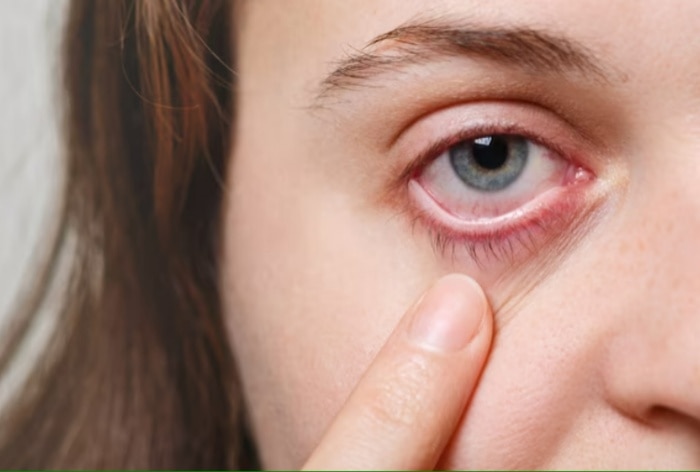Prolonged exposure to sunlight (UV rays) without sufficient protection can cause a number of eye conditions, sometimes referred to as sun-related eye damage.
Photokeratitis: Exposure to ultraviolet (UV) radiation, most often from the sun, can cause photokeratitis, a transient and painful eye condition. Like sunburn, photokeratitis affects the corneas of the eyes rather than the skin. The cornea, the clear area of your eye in front of your pupil, and the conjunctiva, the clear layer of tissue that lines the inside of your eyelid and the whites of your eyes, can be temporarily damaged by UV radiation. Dr. Mandeep Singh Basu, CEO of Jagat Pharma, spoke about the need to protect our eyes from dangerous UV radiation with IANS. Since the signs of sunburn on the eyes can take several hours to appear, we often don’t realize the extent of the damage until it’s too late.
SIGNS AND SYMPTOMS OF EYE DAMAGE FROM SUNBURN
- Redness and swelling: One of the main symptoms of sun-related eye damage is redness and swelling of the eyes. Prolonged exposure to the sun’s UV rays can cause irritation and inflammation of the delicate tissues around the eyes, leading to redness and swelling. If a person notices these symptoms after spending time outdoors, it may indicate sun-induced eye damage.
- Blurry vision: It is another common sign of sun-related eye damage. According to Ayurveda, this symptom is associated with an imbalance in the Vatadosha, responsible for bodily functions and movements. Prolonged sun exposure can increase dry eyes, disrupting natural lubrication and causing cloudy or blurry vision. If your vision becomes blurry or unclear after being out in the sun for a long period of time, it is essential to seek medical attention as soon as possible.
- Sensitivity to bright light: Sun-related eye damage can also make the eyes more sensitive to bright light, known as photophobia. If a person squints or experiences discomfort when exposed to sunlight or other sources of strong light, it may indicate eye damage caused by UV radiation. Photophobia can cause headaches and eyestrain.
- Eyelid twitches: In some cases, sunburned eyes may show twitching or twitching of the eyelids. This involuntary movement of the eyelids, known as myokymia, may respond to excessive exposure of the eye to ultraviolet radiation. If someone experiences eyelid twitching along with other symptoms, it is advisable to see an eye care professional.
- Dryness and grit: The sun’s rays can deplete your eyes’ natural moisture, causing dryness and a gritty feeling. Ayurvedic texts suggest that excessive heat can upset the balance of the body’s humor, particularly Vatadosha, leading to dryness, itchiness, and discomfort.
- Eye fatigue and discomfort: Excessive exposure to the sun can tire the eyes and cause fatigue and a feeling of heaviness. Ayurveda attributes these symptoms to an imbalance in the Kapha dosha, which represents stability and nutrition. The eyes may feel tired, sore, or heavy, making it difficult to concentrate or engage in visually demanding tasks. This condition can affect productivity and quality of life. Eye strain can also cause heavy eyes.
- Changes in color perception: Sun-related eye damage can sometimes affect an individual’s perception of color. If a person notices disturbances in the way they perceive colors or has difficulty distinguishing between certain shades, it could be due to UV-induced eye damage. This symptom warrants careful evaluation by an ophthalmologist.
In short, protecting our eyes from the harmful effects of UV radiation is crucial to maintaining optimal eye health. Recognizing the signs and symptoms of sun-related eye damage can help us take immediate action and seek appropriate medical attention.
PREVENTIVE MEASURES FOR SUNBURNED EYE DAMAGE
Practicing sun safety measures, such as wearing UV-protective sunglasses and hats and staying in the shade during peak sun hours, can significantly help reduce the risk of sun-related eye damage and protect our vision for years . Also, practice eye exercises and rest your eyes regularly, especially during activities that involve prolonged screen time or intense visual focus. Also, include pitta-calming foods like sweet fruits, leafy greens, and cooling herbs in your diet to maintain balance.
(With IANS entries)
Published Date: June 24, 2023 9:40 AM IST
–>
–>
